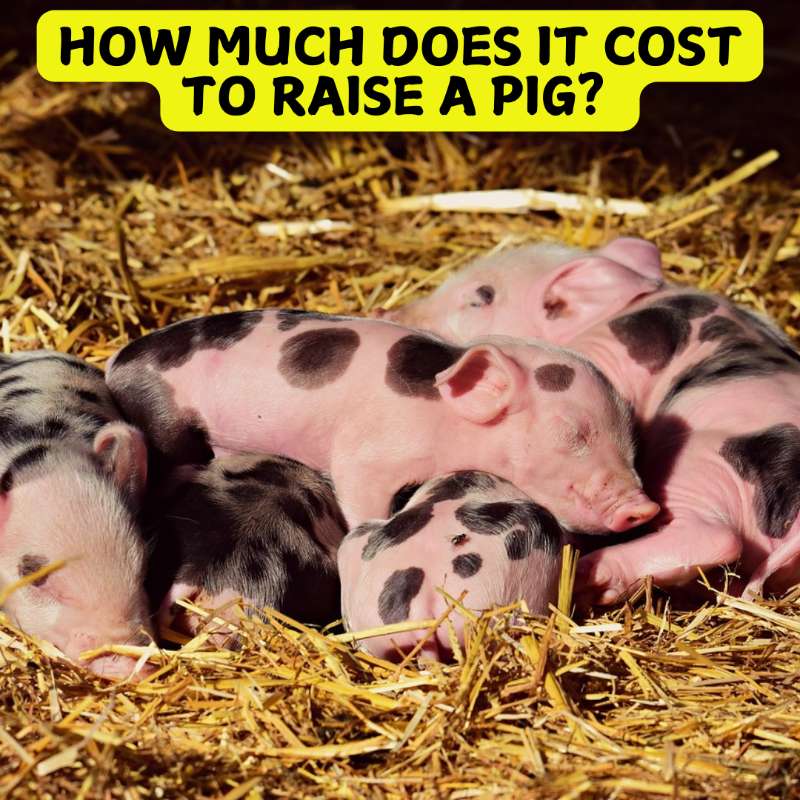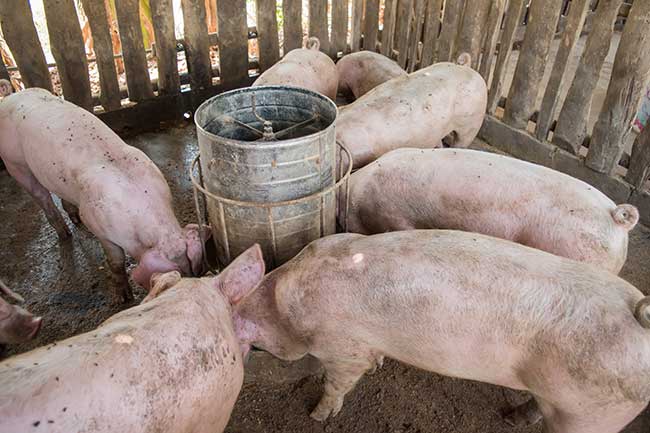How Much Does It Cost to Raise A Pig?

Raising pigs can be a rewarding venture, whether for personal consumption or as a small business. However, it requires careful planning, as costs can vary depending on location, pig breed, feed quality, and other factors.
Below, we’ll break down the average costs associated with raising pigs in the United States, providing a comprehensive overview.
Initial Costs
- Purchasing Piglets
- The cost of piglets varies depending on the breed and quality. On average, you can expect to pay between $50 to $200 per piglet. Heritage breeds or those with specific desirable traits might be more expensive.
- Housing and Infrastructure
- If you’re starting from scratch, you’ll need to build or purchase a pigpen or shelter. A basic setup for a small group of pigs could cost between $300 to $1,000. This includes materials for fencing, shelter, and necessary equipment like feeders and waterers.
- Bedding
- Bedding such as straw or wood shavings is essential for keeping pigs comfortable and maintaining hygiene. Expect to spend around $5 to $15 per bale, with total costs ranging from $100 to $300 annually, depending on the number of pigs and how frequently bedding is replaced.
Ongoing Costs
- Feed
- Feed is the most significant ongoing expense. A pig typically consumes about 600-800 pounds of feed from birth to market weight (usually around 250 pounds). On average, pig feed costs $0.25 to $0.50 per pound. This brings the total feeding cost per pig to around $150 to $400 over its lifetime.
- Water
- Pigs require a constant supply of fresh water. If you’re using municipal water, this cost might be negligible, but if you rely on well water, there could be initial setup costs. In general, water costs are minimal, but budgeting $10 to $20 per pig annually is prudent.
- Veterinary Care
- Veterinary care is essential to keep pigs healthy and prevent disease outbreaks. This includes vaccinations, deworming, and possible medical treatments. Annual veterinary costs can range from $50 to $150 per pig, depending on the health and care level required.
- Miscellaneous Supplies
- This includes items like ear tags, dewormers, and other basic care supplies. You should budget around $20 to $50 per pig per year for these items.

Additional Costs
- Slaughtering and Butchering
- If you’re raising pigs for meat, you’ll need to account for slaughtering and butchering costs. On average, slaughtering can cost $50 to $100 per pig, while butchering and processing fees can add another $0.50 to $1 per pound of meat. For a 250-pound pig, processing could cost $125 to $250.
- Transportation
- Transporting pigs to the butcher or between locations can add costs. If you don’t own a trailer, you might need to rent one or pay someone for transport services. Budgeting $50 to $100 for transportation costs per batch of pigs is advisable.
Total Cost Estimate
Adding up these costs, the total expense to raise one pig from piglet to market weight is as follows:
- Initial Costs: $400 to $1,500 (including piglet, housing, and bedding)
- Ongoing Costs: $230 to $620 per pig (including feed, water, veterinary care, and supplies)
- Slaughtering and Processing: $175 to $350 per pig
- Total: $805 to $2,470 per pig
Economies of Scale
It’s important to note that many costs, particularly infrastructure, veterinary visits, and transportation, can be spread out over multiple pigs, making it more cost-effective to raise several pigs simultaneously. Additionally, buying feed in bulk or using alternative feeding methods (e.g., food scraps or pasture) can further reduce expenses.
Conclusion
Raising pigs requires a significant financial commitment, especially when starting out. However, by carefully managing costs and planning for economies of scale, pig farming can be a sustainable and profitable venture. Whether you’re raising pigs for personal use or commercial purposes, understanding the costs involved is crucial to ensuring success.